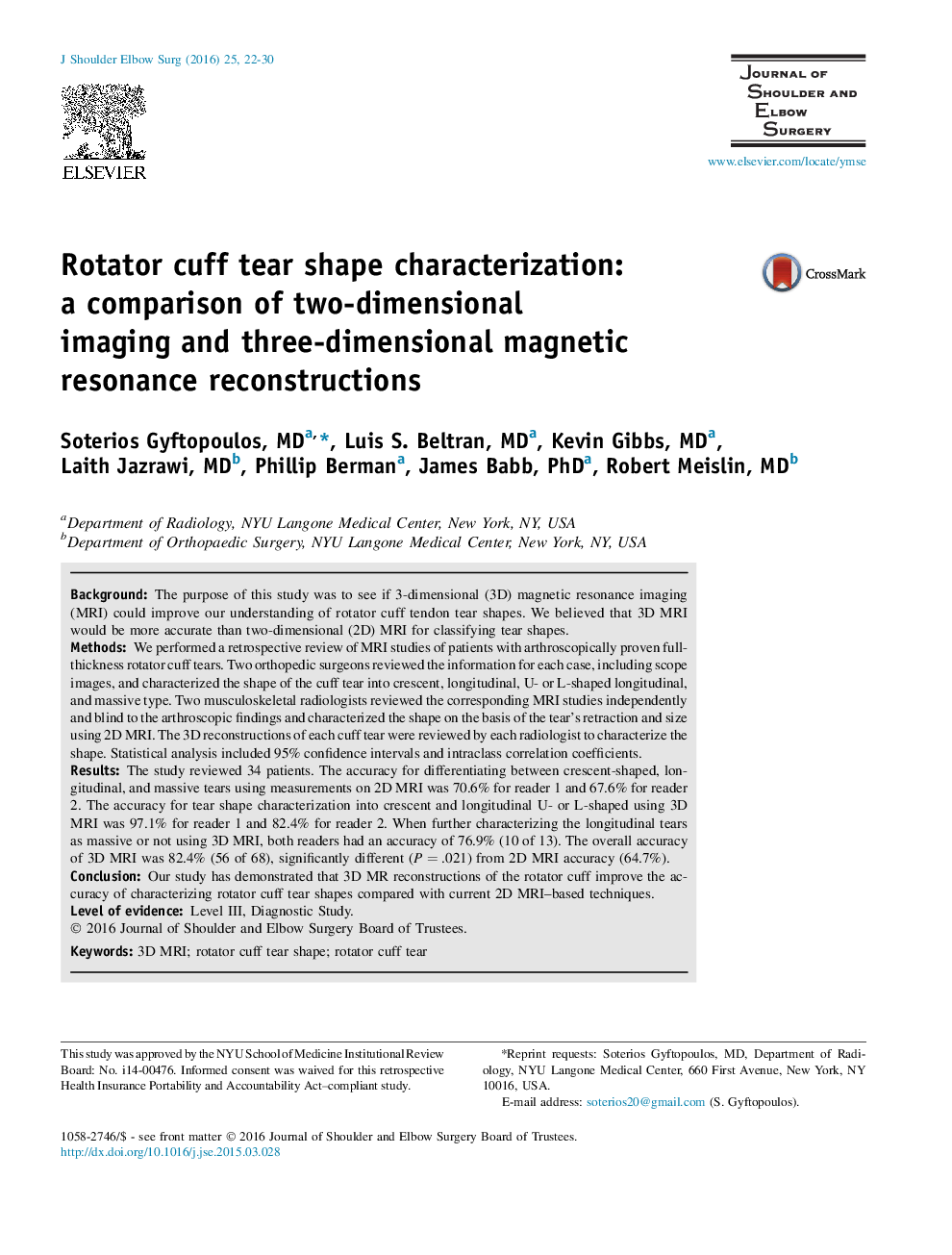| کد مقاله | کد نشریه | سال انتشار | مقاله انگلیسی | نسخه تمام متن |
|---|---|---|---|---|
| 6210837 | 1266966 | 2016 | 9 صفحه PDF | دانلود رایگان |
BackgroundThe purpose of this study was to see if 3-dimensional (3D) magnetic resonance imaging (MRI) could improve our understanding of rotator cuff tendon tear shapes. We believed that 3D MRI would be more accurate than two-dimensional (2D) MRI for classifying tear shapes.MethodsWe performed a retrospective review of MRI studies of patients with arthroscopically proven full-thickness rotator cuff tears. Two orthopedic surgeons reviewed the information for each case, including scope images, and characterized the shape of the cuff tear into crescent, longitudinal, U- or L-shaped longitudinal, and massive type. Two musculoskeletal radiologists reviewed the corresponding MRI studies independently and blind to the arthroscopic findings and characterized the shape on the basis of the tear's retraction and size using 2D MRI. The 3D reconstructions of each cuff tear were reviewed by each radiologist to characterize the shape. Statistical analysis included 95% confidence intervals and intraclass correlation coefficients.ResultsThe study reviewed 34 patients. The accuracy for differentiating between crescent-shaped, longitudinal, and massive tears using measurements on 2D MRI was 70.6% for reader 1 and 67.6% for reader 2. The accuracy for tear shape characterization into crescent and longitudinal U- or L-shaped using 3D MRI was 97.1% for reader 1 and 82.4% for reader 2. When further characterizing the longitudinal tears as massive or not using 3D MRI, both readers had an accuracy of 76.9% (10 of 13). The overall accuracy of 3D MRI was 82.4% (56 of 68), significantly different (PÂ =Â .021) from 2D MRI accuracy (64.7%).ConclusionOur study has demonstrated that 3D MR reconstructions of the rotator cuff improve the accuracy of characterizing rotator cuff tear shapes compared with current 2D MRI-based techniques.
Journal: Journal of Shoulder and Elbow Surgery - Volume 25, Issue 1, January 2016, Pages 22-30
